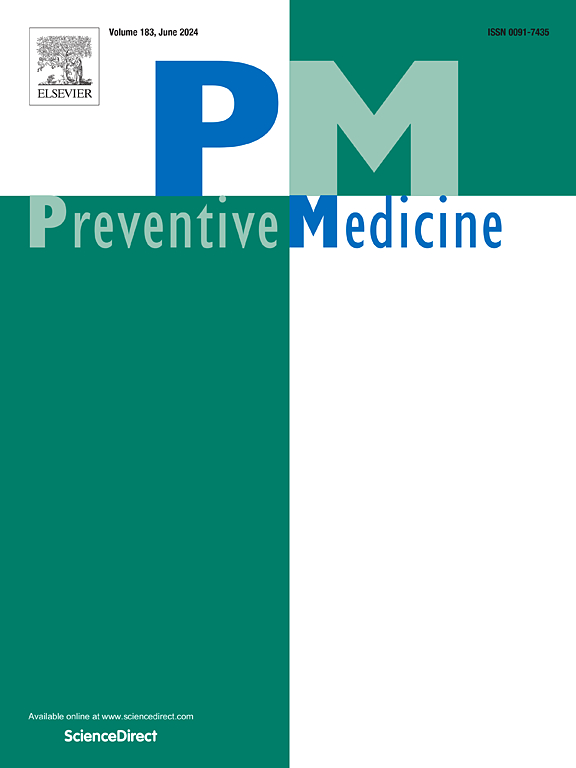Prospective association of internet gaming disorder with subsequent first suicidal attempt: A large-scale school-based study of Chinese adolescents
IF 3.2
2区 医学
Q1 MEDICINE, GENERAL & INTERNAL
引用次数: 0
Abstract
Objectives
While Internet Gaming Disorder (IGD) is a known risk factor for suicidal ideation, longitudinal evidence linking it to suicidal attempt remains scarce. This study investigates whether IGD severity independently predicts first-onset suicidal attempt in adolescents.
Methods
A school-based cohort of 87,390 Chinese adolescents (baseline age: 14.2 ± 1.5 years) was followed for one year (2022−2023). The severity of IGD was assessed using the Internet Gaming Disorder Scale-Short Form (IGDS9-SF). The primary analysis utilized multivariable logistic regression to examine the association between the continuous IGDS9-SF score and incident suicidal attempts, adjusting for demographics, mental health symptoms, and baseline suicidal ideation. Sensitivity analyses included examining categorical IGD status, individual symptom contributions, non-linearity testing, and E-value calculation.
Results
A total of 6620 (7.6 %) adolescents reported an incident suicidal attempt. Each one-point increase in the IGDS9-SF score raised the odds of a first suicidal attempt by 2 % (Adjusted Odds Ratio = 1.02, 95 % CI = 1.02–1.03). The association was robust across all sensitivity analyses, demonstrating a linear trend and resilience to unmeasured confounding (E-value ≥2.24).
Conclusions
IGD severity is an independent, dose-dependent associated factor for suicidal attempt in adolescents. Measuring IGD severity might be a valuable strategy for identifying adolescents at risk.
网络游戏障碍与随后的第一次自杀企图的前瞻性关联:一项针对中国青少年的大规模学校研究
虽然网络游戏障碍(IGD)是一个已知的自杀意念风险因素,但将其与自杀企图联系起来的纵向证据仍然很少。本研究调查IGD严重程度是否独立预测青少年首次自杀企图。方法以学校为基础,对87,390名中国青少年(基线年龄:14.2±1.5岁)进行为期一年(2022 - 2023年)的随访。IGD的严重程度采用网络游戏障碍量表(IGDS9-SF)进行评估。初步分析利用多变量逻辑回归来检验连续IGDS9-SF评分与事件自杀企图之间的关系,调整人口统计学、心理健康症状和基线自杀意念。敏感性分析包括检查IGD的分类状态、个体症状贡献、非线性检验和e值计算。结果共有6620名(7.6%)青少年报告有自杀未遂行为。IGDS9-SF评分每增加1分,第一次自杀企图的几率增加2%(调整优势比= 1.02,95% CI = 1.02 - 1.03)。在所有敏感性分析中,这种关联都是稳健的,显示出线性趋势和对未测量混杂因素的恢复力(e值≥2.24)。结论sigd严重程度是青少年自杀企图的独立、剂量依赖性相关因素。测量IGD的严重程度可能是识别青少年风险的一个有价值的策略。
本文章由计算机程序翻译,如有差异,请以英文原文为准。
求助全文
约1分钟内获得全文
求助全文
来源期刊

Preventive medicine
医学-公共卫生、环境卫生与职业卫生
CiteScore
7.70
自引率
3.90%
发文量
0
审稿时长
42 days
期刊介绍:
Founded in 1972 by Ernst Wynder, Preventive Medicine is an international scholarly journal that provides prompt publication of original articles on the science and practice of disease prevention, health promotion, and public health policymaking. Preventive Medicine aims to reward innovation. It will favor insightful observational studies, thoughtful explorations of health data, unsuspected new angles for existing hypotheses, robust randomized controlled trials, and impartial systematic reviews. Preventive Medicine''s ultimate goal is to publish research that will have an impact on the work of practitioners of disease prevention and health promotion, as well as of related disciplines.
 求助内容:
求助内容: 应助结果提醒方式:
应助结果提醒方式:


